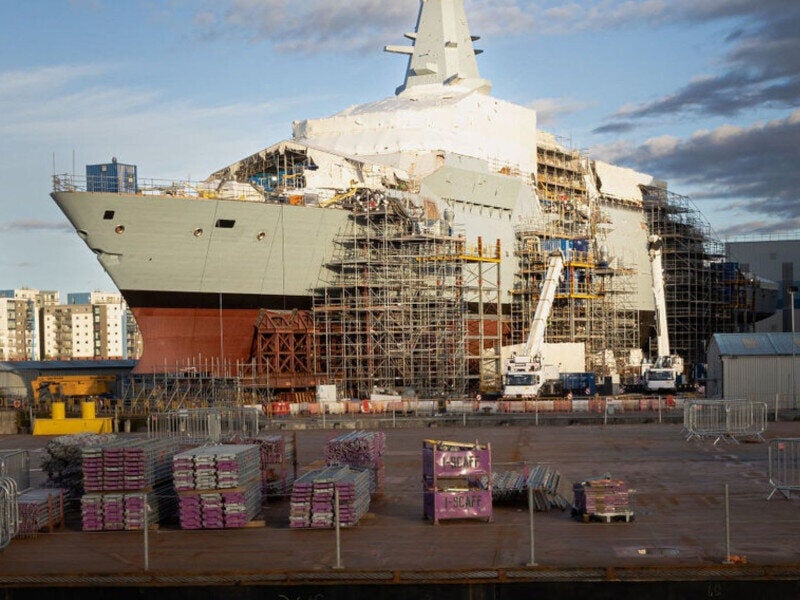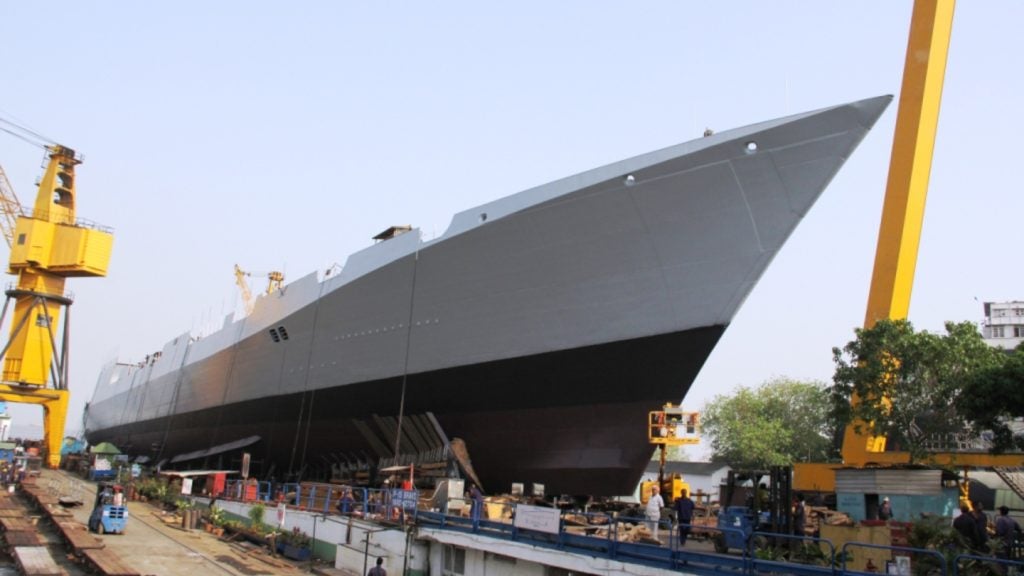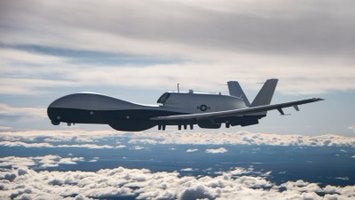The Type 26 frigates, also known as the City-class frigates, are a series of new multirole warships being built for the UK Royal Navy.
Procurement of eight City-class frigates is planned under the Global Combat Ship (GCS) programme, previously known as the Future Surface Combatant (FSC) programme, which was launched by the UK Ministry of Defence (MoD). The frigates will replace the Royal Navy’s eight Type 23 anti-submarine warfare (ASW) frigates.
The GCS programme includes the development of new air defence, ASW and general purpose (GP) ships. The Type 26 Frigate represents the version of the programme adopted for the Royal Navy.
The ships will bear the names HMS Glasgow, HMS Cardiff, HMS Belfast, HMS Birmingham, HMS Sheffield, HMS Newcastle, HMS Edinburgh, and HMS London. The construction of the ships will take place at BAE Systems’ shipyards in Glasgow, Scotland.
Construction of the first Type 26 GCS, HMS Glasgow, commenced at BAE Systems’ Glasgow shipyard in 2017. HMS Glasgow entered the water for the first time in 2022.
The first steel for the second frigate, HMS Cardiff, was cut in August 2019. The steel-cutting ceremony for the third City-class frigate, HMS Belfast, was held in June 2021. The steel-cutting ceremony for the fourth Type 26 frigate, HMS Birmingham, was held in April 2023.
The first City-class frigate is expected to enter service in the mid-2020s.
Type 26 Global Combat Ship programme details
The GCS was conceived as the FSC programme in 1998. Two Type 45 Destroyers were cancelled in the 2008 budget to enable the development of the FSC programme.
The assessment phase of Type 26, from initial conceptual design to detailed specifications, was started in March 2010.
The four-year programme was jointly carried out by BAE Systems and the UK MoD through a naval design partnership. The value of the contract was £127m ($208m). The latest design of Type 26 GCS was unveiled by the UK MoD in August 2012.
The Type 26 programme is considered similar to the F-35 Joint Strike Fighter programme being developed for the US military by Lockheed Martin.
The frigates will meet the next-generation ASW and land operation mission requirements of the Royal Navy. They will also be available for export. Canada and Australia are building their own frigates based on the Type 26 design.
The Type 26 frigates will operate from the Devonport naval base in Plymouth, England, UK. The vessels are expected to remain operational until the 2060s.
Orders and deliveries
BAE Systems signed six design and development contracts in June 2014 for equipment that included propulsion, electrical, ventilation, combat and navigation systems.
In February 2015, the UK MoD signed a demonstration contract worth £859m with BAE Systems to support the initial assessment phase, beginning in early April 2015. The investment was used to procure long-lead items such as gas turbines, diesel generators and steering gear, for the first three ships as well as to develop shore-based testing facilities.
BAE Systems received a contract worth £3.7bn from the UK MoD to build the first three Type 26 ships in July 2017.
In November 2022, BAE Systems secured a £4.2bn contract from the UK MoD to build the next five City-class Type 26 frigates for the Royal Navy.
Type 26 frigate design and features
The basic GCS frigate has a flexible design that will allow it to adapt to a range of weaponry and sensors. The design will also allow for new technology upgrades and the execution of different strategic landscape shifts.
The design will provide stealth capabilities, making it difficult for enemy submarines to detect.
The frigate is designed for modularity and flexibility. It has clean angular lines for operating stealth. The main hangar will be able to hold a Merlin/Wildcat helicopter, while the secondary hangar will accommodate an unmanned aerial vehicle.
The stern has a mission bay with a ramp to allow rigid-hulled inflatable boats, unmanned surface vehicles (USV) or towed array sonar to be deployed. The flight deck of the frigate will allow a heavy-lift helicopter such as a Chinook, to land.
Type 26 will have a displacement of 6,900 tonnes (t), a length of 149.9m, and a maximum beam of 20.8m.
The GCS will have a crew complement of 157, as well as berths to accommodate 51 embarked troops.
The warship, which will be able to operate independently or as part of a task group, will serve as the workhorse of the Royal Navy’s fleet. It will perform the core roles of warfighting, maritime security and international engagement.
It will primarily be deployed to conduct ASW and air defence operations while secondary missions will include counter-piracy, counter-terrorism, and humanitarian assistance.
Proposed variants under the Global Combat Ship programme
Three variants, namely ASW, anti-aircraft warfare (AAW) and GP vessels, were proposed under the Type 26 GCS programme.
To protect the ship against submarine threats, the ASW variant will be equipped with standard hull-mounted sonar as well as low-frequency active and passive sonars. It will also have medium-range target indication and fire-control radar. It will be possible to configure the mission bay to meet operational requirements.
The AAW variant will be equipped with a long and medium-range anti-air missile system and one long-range air surveillance radar for protection against air threats. Its modular design will enable the accommodation of defence systems and radars from various countries.
The GP variant will have a versatile mission bay and accommodate various types of USVs, seaboats, and underwater vehicles. It will be able to perform counter-piracy, maritime security, and counter-terrorism operations. With flexible space, it will be possible to reconfigure the vessel to house 84 additional berths and support disaster relief or humanitarian operations.
Weapons
The Type 26 GCS is expected to have Sea Ceptor, the maritime variant of the MBDA Common anti-air modular missiles, anti-submarine weapons and anti-ship missiles (ASMs), such as future cruise/anti-ship weapon (FC/ASW).
Sea Ceptor can intercept multiple targets at a range of 25km and achieve a speed of more than 3,218,68km an hour. The MK41 vertical strike launcher is compatible with a wide range of weapons.
The ships will also be armed with the MK 45 Mod 4 5in 62-calibre main gun and two Phalanx close-in weapon systems (CIWS). The MK 45 Mod 4 gun provides a firing range of 20nm.
Small calibre carried by the Type 26 frigate will include SA80, a general-purpose machine gun and 9mm guns to fire at both surface and airborne targets.
On-board sonar/radar technology
The City-class frigate will have Type 997 Artisan 3D medium-range surveillance radars from BAE Systems, as well as a Sonar 2087 towed array sonar system and Sonar 2150 hull-mounted sonar.
It will also be equipped with Terma’s SCANTER radars and Raytheon Naval Radar NX software.
Propulsion and performance
The ship will be powered by two electric motors, four MTU high-speed diesel generators with Type 20V 4000 M53B engines, and an MT30 gas turbine direct drive in a combined diesel-electric or gas configuration.
The engines will be equipped with an exhaust after-treatment system to reduce nitrogen oxide emissions and comply with International Maritime Organization Tier III emission standards requirements. The components of the propulsion system are optimised to reduce underwater noise.
The maximum speed of the frigate is expected to be more than 26 knots.
The frigate will have an endurance of 60 days. Its range is estimated to be more than 7,000nm.
Contractors involved
Ultra Electronics Command & Sonar Systems, part of Ultra Electronics Holdings received a contract from the UK MOD to supply Sonar Type 2150 hull-mounted sonar for integration into the first three warships in October 2018.
Brüel & Kjær, a Danish supplier of sound and vibration measurement systems, was selected to provide a self-noise monitoring system for the first three Type 26 frigates to help maintain a low noise signature.
Rolls-Royce received a contract to supply 12 MTU diesel generator sets for the first three City-class frigates in May 2016. The company was also contracted to supply MT30 gas turbines for the first three ships and signed a design development agreement for ship components such as steering gear, stabilisers, and mission bay handling equipment.
BAE Systems awarded two contracts to Rolls-Royce to supply low-noise propellers and mission bay handling technologies for the first three ships of the Type 26 GCS project.
GE Power Conversion, part of General Electric, was selected to provide the electric propulsion system for the ship. David Brown Santasalo received a demonstration and manufacturing contract to supply the main reduction gearboxes for the project in August 2015.
European missile manufacturer MBDA received a demonstration and manufacturing contract worth £100m from the UK MOD for the Sea Ceptor air defence system for the City-class frigates in November 2016.
BAE Systems’ Combat Systems division was appointed to provide shared infrastructure and electrooptical sensors control system.
Babcock International, a defence company based in the UK, received a contract to design, manufacture, test and oversee the installation of the air weapons handling system for the frigates. The company also received a contract to provide the helicopter landing grid in July 2017. Dent Steel Services was appointed to supply structural steel for the ships.
Under a contract received in July 2017, multinational aerospace and defence company Thales is responsible for supplying its antisubmarine warfare sonar for the new Type 26 frigates.
Lockheed Martin was contracted to supply the MK41 vertical launching system for the ships in March 2018.
Rohde & Schwarz, a communications systems supplier based in Germany, was appointed to provide integrated communications systems, based on NAVICS, for the frigates. The company is providing the full spectrum of internal and external communications.
The company subcontracted STS Defence for the design and development of configurable communications masts for the warships.
Raytheon Anschütz, part of Raytheon Technologies, was contracted to provide the integrated navigation and bridge system (INBS) for the new Type 26 ships. The company completed the integration of the warship electronic chart display information system into the INBS in April 2017.
Raytheon Anschütz contracted Terma to supply type 6000 SCANTER radars.
BAE Systems awarded a contract to DETEGASA, a Spanish company, for the engineering and supply of sewage treatment plants and oily water separators for the Type 26 project in December 2016.
Denholm Industrial Services was awarded a contract to perform surface preparation and painting to support the HMS Glasgow’s transition to outfit phase while Malin Group was contracted for the vessel load out and float off.
CBL was engaged for cable and associated works while Kaefer was appointed to provide insulation products and installation services. SCA received a contract to provide access and containment services.
Johnsons Controls was contracted for the chilled water plants, Marine Systems Technology for gastight, weathertight and watertight doors, hatches and scuttles, as well as the Hangar XY crane, and Salt Separation Services for the reverse osmosis desalination plants.
MEP-Pellegrini Marine Equipments, an Italian provider of hoist and deck equipment, received a contract to provide anchor handling and mooring equipment, radar cross-section screen closures, and boat davit.
Fendercare Marine’s Products division was engaged to supply deck equipment for the first three Type 26 frigates in May 2020. Leviton received a contract from BAE Systems to provide cabling for the first three warships in September 2019.
FES Support Services was selected to provide fibre optic installations.
Other suppliers include Aeronautical & General Instruments, Cathelco, Naval Group (formerly known as DCNS), DESMI, Sauer Compressors UK, MacTaggart Scott, Score Group, Renold, Ernest West and Beynon, Plasan, Umoe Mandal, and Tods Defence.












